#savingwildlife
Photo

Beary Pawsome Art Auction in aid of Free The Bears has just gone live in Perth, Western Australia: https://oktion.com.au/event-details/307 If you would like to support this worthy charity this painting among many other artworks are available...check it out 🐻 #freethebears #savethebears#auction #savingwildlife#sunbears#moonbears #againstanimalcruelty#artforanimals #animalart#animalsinart#bearsinart #bearsoninstagram#endangeredwildlife #artspeaks#artistforconservation #artistsforconservation#originalart #acrylicpainting#originalacrylicpainting #onefightunite#artoftheday (at Perth, Western Australia) https://www.instagram.com/p/Ck0coRjPEMJ/?igshid=NGJjMDIxMWI=
#freethebears#savethebears#auction#savingwildlife#sunbears#moonbears#againstanimalcruelty#artforanimals#animalart#animalsinart#bearsinart#bearsoninstagram#endangeredwildlife#artspeaks#artistforconservation#artistsforconservation#originalart#acrylicpainting#originalacrylicpainting#onefightunite#artoftheday
0 notes
Text
Watch the video below for more information!
Just when we thought it couldn’t get any cuter, sweeter and more heart-warming, this happened.
The bond and understanding between Jazz the giraffe and Hunter our AP Belgian Malinois is astonishing.
#orphanedgiraffe #savingwildlife #wildliferescue #oddanimalcouples #interspeciesrelationships #animalbonds #malinois #antipoachingdogs
Morongwane Game Heritage your little one is in good hands with Hunter
0 notes
Photo
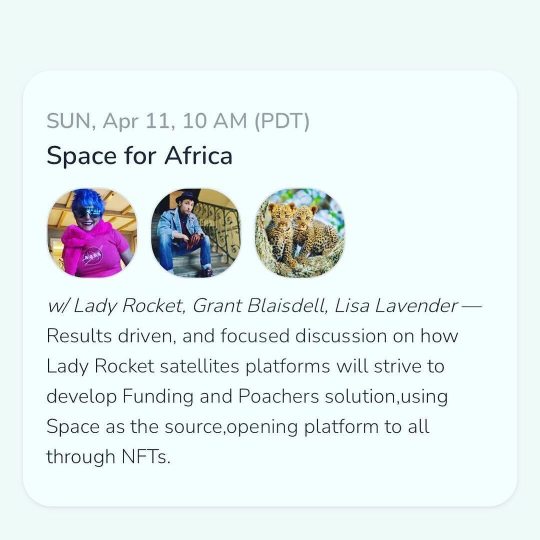
Posted @withregram • @wildography_and_safaris We are looking forward to our Clubhouse event where we will be discussing “Space for Africa” with @ladyrocketspace & @gbsavant Special guest will include @savingthesurvivors @gustafson_photo_safari @paula_kahumbu @ugandaconservationfoundation @ugwildlife. Tomorrow, Apr 11 at 10:00 AM PDT 6pm GMT on @joinclubhouse. Join us! https://www.joinclubhouse.com/event/PAAZbLvQ Lo #ladyrocketspace #nft #blockchaintechnology #wildography #wildlifeconservation #wildlifeprotection #savingwildlife https://www.instagram.com/p/CNgjNgwg7Lw/?igshid=1eq3vw02zm6zr
#ladyrocketspace#nft#blockchaintechnology#wildography#wildlifeconservation#wildlifeprotection#savingwildlife
5 notes
·
View notes
Photo

Can’t not repost an adorable puggle pic that also includes a pun! Thanks @scramperton for bringing this to my attention! (PS. If you didn’t already know, puggle is the term used for a baby echidna.) 😍 RePosted • @zooborns @perthzoo Not only is this puggle memory adorable but ‘echid-ya’ not, our #TonguesOutTuesday champion is toothless and relies on its long sticky tongue to slurp up its meal! #echidnapuggle #echidna #PerthZoo #SavingWildlife #zoobaby #zooborns #savingspecies https://www.instagram.com/p/B2QFL_jHrDg/?igshid=10owseq1z389c
26 notes
·
View notes
Photo

Saved this little baby possum from the heat yesterday I gave it a drink and then took it to the wildlife vet #possum #wildlife #babypossum #vet #savingwildlife #possumsofinstagram #possumrescue #possumhands #ringtailpossum #possumdrinkingwater #animal #sleepingpossum #possumface #possumlivesmatter #savepossums https://www.instagram.com/p/B6Z2yb4FaBi/?igshid=1jnu578exhm6d
#possum#wildlife#babypossum#vet#savingwildlife#possumsofinstagram#possumrescue#possumhands#ringtailpossum#possumdrinkingwater#animal#sleepingpossum#possumface#possumlivesmatter#savepossums
1 note
·
View note
Photo

We are often called out to squirrels trapped in, not so 'squirrel proof' bird feeders. Once again Simon comes to the rescue. Head on over to our YouTube channel to check out how he gets on! https://youtu.be/o6-wZpc_mMU #squirrel #wildlife #wildliferescue #wildanimals #rescue #animals #savingwildlife https://www.instagram.com/p/B0HBmFIACfs/?igshid=5hsfe6ktjt7c
7 notes
·
View notes
Photo

There was a turtle in the road by my house so I moved it somewhere safe. Cute little guy. 🖤 #wildlife #turtle #turtles #savingwildlife #nature https://www.instagram.com/p/BnWC35iD73Z/?utm_source=ig_tumblr_share&igshid=12930t64s0gut
3 notes
·
View notes
Photo

The beautiful little flower saving Australian native wildlife. Mirbelieae and members of the Gastrolobeum species, poison peas, contain a target specific poison, lethal to introduced predators such as foxes, feral cats and wild dogs but safe to native species who have lived with them for centuries and have a natural tolerance. This has been the key ingredient in baits used to control feral predators. It's believed that feral cats were the major factor in killing up to 95% of the Brush-tail Bettong (Woylie) population 2 decades ago, 160,000 in the Upper Warren region alone, between 2002 and 2010.
#reandutoit#reandutoitphotography#flowersofinstagram#flowersofaustralia#naturephotography#nature#abcmyphoto#westernaustralia#justanotherdayinwa#poisonpea#savingwildlife#extinction#conservation#dryandra
0 notes
Photo

New desk pet dubbed Eriluistina aka ELT. MB Solutions, rescuing local wildlife since... yesterday. 😉 #hummingbird #fledgling #animalrescue #savingwildlife #cactusgarden (at Costa Mesa, California)
1 note
·
View note
Photo
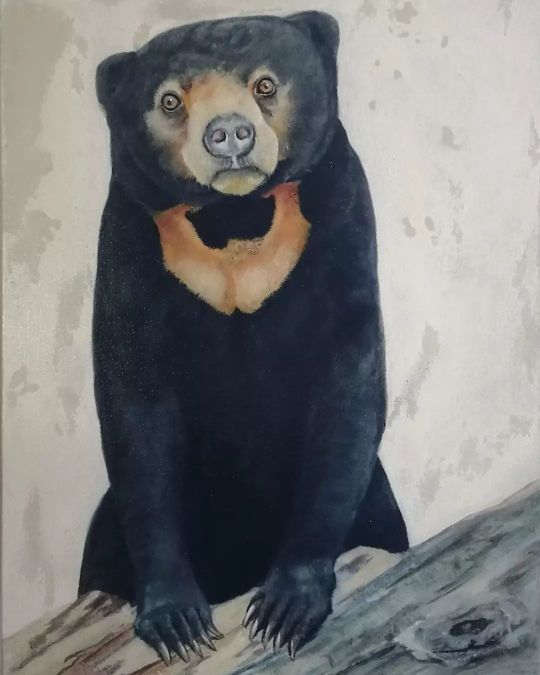
'Moon Bear' acrylic on stretched canvas painted to help raise funds for Free the Bears, Perth, WA. This not for profit foundation was started by Mary Hutton when she learned of the cruel practice of bear bile farming for traditional medicines in Asia. Thank goodness for people like Mary who took action. Mary is responsible for starting the Cambodian Bear Sanctuary, now the largest of its kind. If you are able, please support this wonderful foundation. Thank you Mary Hutton @freethebears🤗 #freethebears#bears#moonbears #artistsforconservation #conservation #wildlife#animals#animalart#bearsinart #savingwildlife#wildlifeconservation #maryhutton##wildlifepassion#helpsavethebears (at Perth, Western Australia) https://www.instagram.com/p/Cek4vijvnYh/?igshid=NGJjMDIxMWI=
#freethebears#bears#moonbears#artistsforconservation#conservation#wildlife#animals#animalart#bearsinart#savingwildlife#wildlifeconservation#maryhutton#wildlifepassion#helpsavethebears
0 notes
Photo

Regrann from @perthzoo - #BabyLove! <3 Suli looks pretty happy getting a cuddle from mum, Kaluli. This precious #FanFriday moment was captured by Cheryl Homewood. #SavingWildlife #savingwildlifetogether #treekangaroo #babyanimal #treekangaroojoey #ZooBorns #regrann
#babylove#savingwildlifetogether#zooborns#regrann#savingwildlife#treekangaroojoey#babyanimal#treekangaroo#fanfriday
1 note
·
View note
Photo
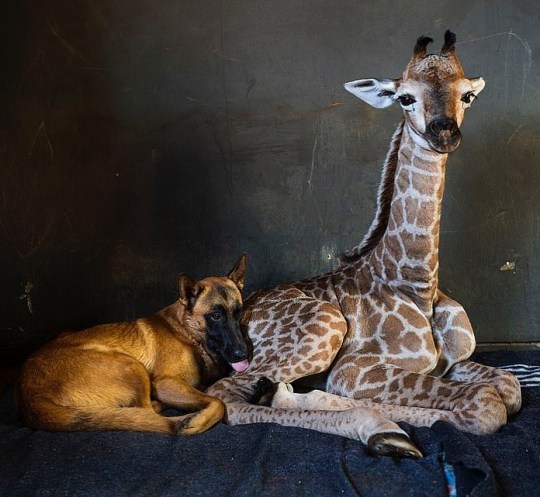
Meet bezzie mates Jazz the orphaned giraffe & anti poaching dog Hunter. Instafollow @therhinoorphanage for all the juicy stories on how they are getting on like a house on fire. 😆 * #savingwildlife #funnywildlife #wildliferescue #giraffe #dogoftheday #therhinoorphanage #cute #unlikelyfriends #animalbonds #squee https://www.instagram.com/p/B5VuKsZgpJ5/?igshid=k7esnnbwxk8h
#savingwildlife#funnywildlife#wildliferescue#giraffe#dogoftheday#therhinoorphanage#cute#unlikelyfriends#animalbonds#squee
197 notes
·
View notes
Text
Drones and the future of conservation
Around the world, conservationists are using drones to protect endangered species and battle wildlife crime
The drone wars have begun and battle lines are drawn. Privacy stands on one side and possibilities on the other. It hardly seems like a fair fight. The possibilities are endless, as we’re learning day by day, and the best privacy can do is reach a compromise.
Drones are quickly swooping into the commercial sector, from helping property owners sell homes to delivering pizza. Amazon caused a buzz on 60 minutes with their demo of Amazon Prime Air, an urban delivery system capable of dropping packages right to your doorstep in half an hour. The Octocopter drone is far from urban reality, but Jeff Bezos, founder and CEO of Amazon, believes it’s only a matter of time.
Last month, the US Federal Aviation Administration (FAA) announced six test sites for commercial drone use. Over the next few months the FAA hopes to draft rules and regulations needed to safely use drones and protect people’s privacy. Meanwhile, there are some states that have already banned private and law-enforcement drone use.
But drones are riding a global wave, and it’s only getting bigger. We’re coming to understand that drones aren’t just tools of destruction, as portrayed by the military, but simply tools. Their utility is only limited by the human imagination.
For instance, have you heard of drones being used to combat crimes against wildlife in Nepal? Or plan orangutan rescue operations in Indonesia? Or use thermal imaging cameras to identify poachers in Kenya?
Just like the commercial sector, conservationists are discovering the possibilities with drones and are using them to preserve nature and protect wildlife.
Drones and conservation
Drones and conservation are a fresh match. Until recently, drones had been too expensive for NGOs and researchers to afford. Besides, someone had to take the leap to show others the way.
Conservation Drones was started by professors Lian Pin Koh and Serge Wich. Their research interests in conservation and mammals brought them together in 2011. Their imagination and boyish curiosity is what led to Conservation Drones.
Koh and Wich realized that commercial drones were not an option for the average research budget. Drones needed to be cheaper, with the type of accessories that benefited researchers, like high definition cameras.
After a successful demo flight in North Sumatra, Indonesia, Koh and Wich were overwhelmed by the response from fellow researchers. Since then, Conservation Drones have taken flight all over the world. There are other organizations like Research Drones, and individuals who are stepping up to use drones for conservation in all kinds of creative ways.
In Nepal, drones are being used by the WWF and the Nepal army to protect the greater one-horned rhinoceros from poachers. In Belize, the fisheries department and Wildlife Conservation Society are considering using drones to monitor illegal fishing activities off the coast. In Kenya, drones – and chilli powder – are being used to scare away elephants from areas with known poaching activity.
In Indonesia, the Sumatran Orangutan Conservation Programme (SOCP) is using drones in ways that would make a CIA operative’s job sound mundane.
The rainforests of Sumatra is a species rich ecosystem and is home to many critically endangered animals, including tigers, rhinos, elephants and orangutans. Parts of the forest are covered by peat swamp, which are carbon rich storage vaults. Globally, peatlands store as much as 500 billion metric tons of carbon, twice as much as trees all around the world. Yet they only cover three per cent of the globe.
But the rainforest and wildlife are under threat from logging (legal and illegal), poaching and forest fires. Palm oil plantations are a big source of income for the Sumatran economy. Palm trees are cheap and easy to grow in temperate climate, and palm oil is ubiquitous in all household products, from soap to sweets. To make room for more plantations, the natural forest and its inhabitants are sacrificed. The government, farm owners and environmentalists have been battling each other over the rights and responsibilities for the ecosystem for years.
It was in North Sumatra where Koh and Wich first tested their prototype drone. And it’s here where we find Graham Usher, a Landscape Protection Specialist with the SOCP, and drone specialist. Usher is using drones to save orangutans, fight crime and preserve the carbon rich peat swamp.
Fighting Crime and Saving Orangutans
Graham flies drones over the forest to spot illegal hunting and logging camps, which are fairly common in North Sumatra. “It is often possible to spot tarpaulins of logging/hunting camps, which allows pin pointing of problems for ground level action,” says Usher. “Isolated blue tarpaulins in the forest can only be four things: illegal logging, illegal hunters, researchers/survey teams, or possibly illegal miners. We usually know if there are researchers or survey teams around.”
Illegal activities spotted by drones are reported to Indonesian law enforcement authorities. In this manner, drones are helping conservation in more than one way. The local authorities don’t have the resources to monitor the forest like Graham and his team do.
Drone surveillance is also used to find fragmented areas of the forest where animals, like orangutans, may be trapped and in need of rescuing. Orangutans typically stay in the safety of tree canopies, rarely stepping down onto the forest floor. Large swaths of land cleared for logging and plantations can leave them trapped in an area, isolated from food and companions.
Low flights with high resolution cameras make it possible to identify individual trees and orangutan nests separated from other parts of the forest.
It also helps keep track of orangutan numbers and preservation efforts. Traditionally, this kind of bookkeeping would require sending a survey team by foot to count orangutan nests. This method is labour intensive, time consuming and potentially dangerous, especially in swampy areas.
Without drones, Graham and his team would have to rely on satellite imagery. While these are free, the images are usually unclear and don’t have the resolution needed for the type of work SOCP is doing. There is also a delay from when the images are taken, processed, and available to the public. Drones provide almost real-time surveillance, which is necessary to catch illegal loggers and poachers. It also makes it possible to organize rescue operations for orangutans that have been isolated by fire or deforestation. Waiting for satellite imagery to come through could mean life or death for an orangutan.
youtube
1 note
·
View note
Photo

“We won’t have a society if we destroy the environment.” - Margaret Meade Margaret Meade’s words are more poignant now then then when she uttered them. We have seen the detestation unleashed by hurricanes, cyclones, tornadoes, tropical storms, blizzards and other forces of nature unleashed by the effects of climate change. Then there are other effects like the destruction of coral reefs, the warming of the arctic which has made things rough for polar bears who depend on ice to hunt and stay alive. In addition villages are being obliterated by rising water and as the permafrost melts it, in turn, releases pockets of methane gas which in turn contributes the greenhouse gases with a more serious contribution then CO2. Then we have other environmental concerns like the huge plastic patches in our oceans. This is having a devastating effect on wildlife who live on, in or near the ocean. They ingest this plastic thinking it food and it has serious consequences including death. Our quest for energy has led to fracking which can cause small to medium size earthquakes in places like Oklahoma. Then there is the heartbreaking loss of so much life in all it’s forms in the rainforests and other habitats. This is also the fault of humans who become poachers, plant crops that ruin habitats like the massive palm oil plantations in Southeast Asia, or the encroachment of humans who destroy natural habitats to create housing and all the additional buildings and infrastructure to support the new communities. Some 45 years ago I became an environmental activist as a teen and continue as one now. It is very sad that we still insist on ruining our planetary home! 🌎🌍🌏 #Quote #MargaretMeade #Environment #EnvironmentalDestruction #ClimateChange #GlobalWarming #PlasticWaste #WildlifeConservation #Fracking #Earthquakes #Arctic #PolarBears #SeaLevelRise #CoralReefDevastation #CoralBleaching #SavingWildlife #Poaching #HabitatLoss #PalmOil #Forests #Rainforests #Environmentalist https://www.instagram.com/p/B3fzjpUAxFe/?igshid=3y3vvl25q1dw
#quote#margaretmeade#environment#environmentaldestruction#climatechange#globalwarming#plasticwaste#wildlifeconservation#fracking#earthquakes#arctic#polarbears#sealevelrise#coralreefdevastation#coralbleaching#savingwildlife#poaching#habitatloss#palmoil#forests#rainforests#environmentalist
0 notes
Photo
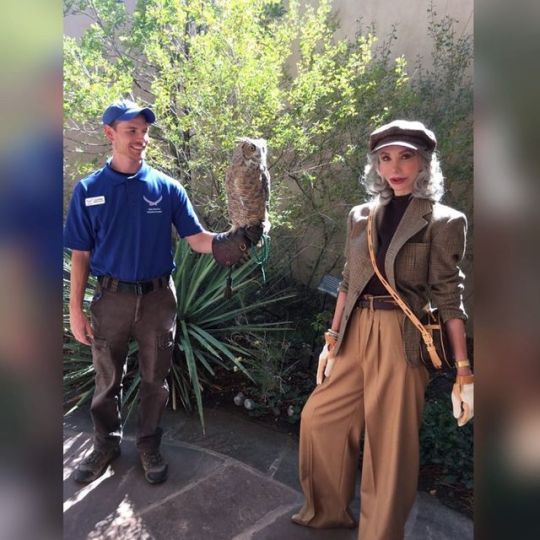
Saterday date with Owls at The Millicent Rogers Museum🦉⭐️💙 Thank you to Jarrod Klopp of New Mexico Wildlife Center🦅🦝🐾 @new_mexico_wildlife_center @millicent_rogers_museum #savingwildlife #owls #owlstagram #owl #owly #iloveowls #iloveowlssomuch #saturday #wild #birds #beautifulbirds #beautifulday #taos #mylife #mountainlife #mountainlife https://www.instagram.com/p/B2sQGUih9BE/?igshid=ecoz2gp5u5uo
#savingwildlife#owls#owlstagram#owl#owly#iloveowls#iloveowlssomuch#saturday#wild#birds#beautifulbirds#beautifulday#taos#mylife#mountainlife
0 notes
Text
BREAKING: US FISH AND WILDLIFE GUTS ENDANGERED SPECIES ACT PROTECTIONS -- FIGHT BACK FOR WILDLIFE!
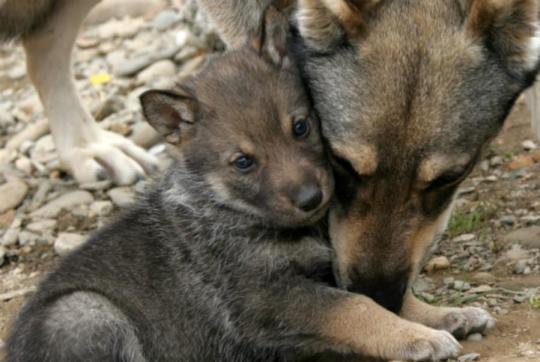
PROGRESSIVE PARTY OFFICIAL PETITION
Defend the Endangered Species Act -- and the Species It Protects!
We must do all we can to protect the Endangered Species Act and the iconic wildlife that depend on it!
WHY THIS MATTERS
The Trump Administration proposed three regulations that would essentially gut major provisions of the administrative rules implementing the ESA, including stripping protections from “threatened” species and creating significant impediments to listing of species and critical habitat designation. Sierra Club and our ESA partners mounted a campaign to push back on these proposed rule changes.
Over 75,000 people like you took action against this attempt to gut the Endangered Species act, and in total, the ESA coalition generated over 800,000 comments.
Today, against a backdrop of recent reports of global mass extinction, the Trump administration released final regulations weakening the Endangered Species Act, the nation’s most effective tool in saving wildlife from extinction.
The Trump Extinction Plan would do major damage to our struggling wildlife. It would gut critical endangered species protections by making it much more difficult to extend protections to threatened species. It would delaying lifesaving action until a species' population is potentially impossible to save. It will make it more difficult to protect polar bears, coral reefs, and other species that are impacted by the effects of climate change. It will even allow economic factors to be analyzed when deciding if a species should be saved, making it easier for companies to build roads, pipelines, mines, and other industrial projects in critical habitat areas that are essential to imperiled species' survival.
Take action to fight back against this administration's horrific attacks on wildlife!
SIGN THE PETITION
TO: U.S. Department of the Interior Director David Bernhardt
By taking action, you will also receive periodic communications from the Progressive Party. You can unsubscribe at any time.
Text of Petition:
I am deeply disappointed and saddened by your agencies’ decision to dramatically weaken the protections of the Endangered Species Act.
The Endangered Species Act (ESA) is one of the most effective environmental policies in American history. Endangered Species Act protection has saved iconic wildlife like the bald eagle, Florida manatee, American gray wolf, California condor and humpback whale. In fact 99% of species protected under this landmark bi-partisan bill have avoided extinction.
Last year, 30 Tribal Nations,34 US senators and over 800,000 activists took action to defend the Endangered Species Act, rejecting any rollback of critical wildlife protections. Unfortunately, this administration has chosen to plow forward with plans to gut this effective, essential wildlife legislation.
It is the responsibility of your agency to protect wildlife, and uphold legislation that protects America’s most precious wildlife -- not poke holes in it to allow for developers, dirty fuels and other destructive forces to damage, destroy and steal land from our vulnerable wildlife.
Please call on your leadership to reverse this shortsighted, greedy decision and allow for the healthy, future survival of wildlife and human life alike.
Originally appeared in SierraClub
Read the full article
#EndangeredSpeciesAct#extinction#FISHANDWILDLIFE#protect#protection#savingwildlife#species#survival#threatened#Trumpadministration#wildlife
0 notes